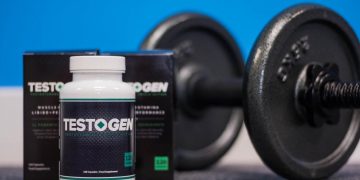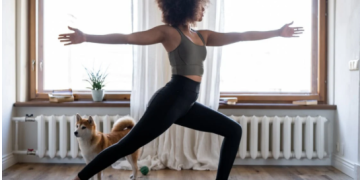We all get pimples. They’re a normal part of the human experience, but we don’t always know how to deal with them. If you’re looking for pimple treatment in Hyderabad, there are many options out there. Some quick fixes might work, but others are best left alone! In this article, we’ll talk about what causes pimples to form and how doctors treat them at home and in their office.
What is a pimple?
Pimples are small, red bumps on your skin. They can be found anywhere on the body, but they most commonly appear on the face and neck.
Pimples are caused by bacteria, hormones and inflammation (swelling) of oil glands in your skin. A pimple forms when an oil gland becomes plugged with dead skin cells or bacteria that has entered through a hair follicle opening in your pores. When this happens, it causes inflammation which leads to a red bump or pimple appearing at the surface of your skin as it tries to fight off infection by creating pus inside its pocket underneath your epidermis (top layer).
What causes pimples to form?
Pimples are caused by a number of factors, including:
- Bacteria. Pores can become blocked with dead skin cells and oil, which allows bacteria to grow inside them. This leads to inflammation and redness in the area around the pore, which is what we call acne.
- Hormones. During puberty or menstruation (or both!), your body produces more sebum–a natural oil that keeps your skin moisturized and healthy–and this extra production can cause your pores to get clogged more easily than usual. If you have sensitive skin or tend toward dryness in general, this can make it even easier for pimples to form on top of existing ones!
- Genetics/Family history of acne may also play a role here; if someone else in your family has had acne problems before then there’s a good chance that will happen again at some point during adolescence as well as adulthood too! Sometimes medication like birth control pills can trigger breakouts too so be sure not take those unless absolutely necessary!
What are the most common types of acne and what causes them?
Pimples are caused by a variety of factors, including genetics and hormones. The most common type of acne is blackheads, which occur when oil builds up in pores and is exposed to air. If you have this type of blemish on your skin, it will be black in color due to oxidization (the same process that turns cut apples brown).
When dirt or oil gets trapped under the skin’s surface without proper cleansing or exfoliation, whiteheads form. Whiteheads are also caused by clogged pores but don’t oxidize like blackheads do–so they remain white instead! Papules are small bumps on the surface of your skin; pustules look similar but contain pus inside them; nodules are large inflamed bumps that can develop into cysts if untreated for too long
How do I know if I have acne or not?
If your skin is broken out, it may be acne. Here’s how to tell:
- Look for whiteheads (also called closed comedones), blackheads (open comedones) and pimples. Whiteheads are small bumps that can be squeezed out with a finger or pore strip. Blackheads are larger than whiteheads and they’re filled with oil; they appear as dark spots on the surface of your skin when you squeeze them open manually or with an extractor tool like the ones you can buy at beauty supply stores. If you have one of these blemishes on your face right now, take a close look at it–you’ll notice there’s a dark ring around its base where dirt has accumulated over time! This means that if we were able to look inside this pore while we were squeezing out all those dead cells from our nose pores (gross!), we’d see there was actually something underneath them: pus! Yikes! That’s why doctors sometimes prescribe antibiotics for people suffering from severe cases involving inflammation caused by infection rather than just simple irritation caused by bacteria alone…
Why does one pimple get treated and another doesn’t?
The reason why some pimples get treated and others don’t is because they form differently. Pimples start out as clogged pores, but if you have oily skin, these clogged pores can become inflamed and infected. It’s important to know that each type of acne has a different treatment plan–and there are many ways to treat them!
If you’re looking for the best pimple treatments on the market today, our experts recommend trying out one of these options:
- Acne.org Regimen Kit ($35) – This kit includes everything you need for clear skin: cleanser (with 2% salicylic acid), toner (with 5% sulfur), moisturizer (with 5% sulfur), plus spot treatment (2% benzoyl peroxide). It comes with two bottles per month so it’s easy to maintain your routine without having too much product at once. The products work together synergistically to fight breakouts while keeping your skin hydrated.
How can I treat my pimples at home?
The first step to treating your acne is to wash your face twice a day. Use a mild cleanser, like Burt’s Bees Radiance Facial Cleansing Cream ($7), and follow up with a toner (or astringent) to remove excess oil and dirt from pores. Then, apply a moisturizer that contains salicylic acid or benzoyl peroxide–both are effective at reducing inflammation and killing bacteria in blemishes. If you have sensitive skin that can’t tolerate those ingredients, try Neutrogena Rapid Clear Stubborn Acne Spot Treatment ($8). Finally, protect yourself from harmful UV rays with sunscreen daily!
How do doctors treat pimples?
In addition to prescribing medication, doctors can also prescribe procedures. These may include laser treatment, chemical peels and microdermabrasion. They may also prescribe creams that are applied directly to the skin or taken orally in pill form.
If you are looking for pimple treatment in Bangalore, then you have come to the right place! Our experienced dermatologists will help you eliminate your skin problems. You can also visit our website at
Conclusion
We hope this article has given you a better understanding of pimple and how it can help treat your acne. If you have any questions or concerns about how to treat your acne at home, please contact us today!








































